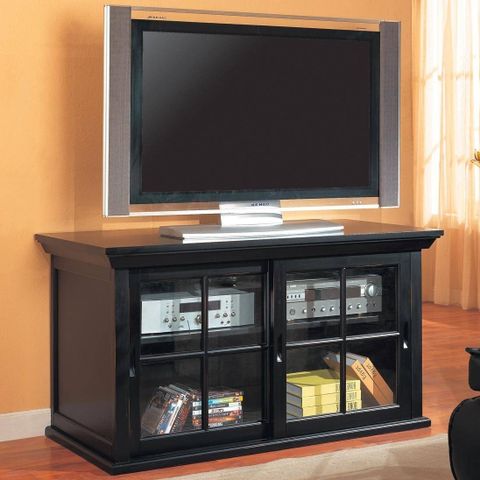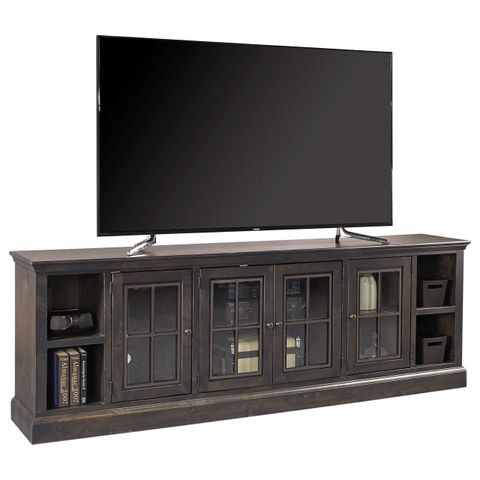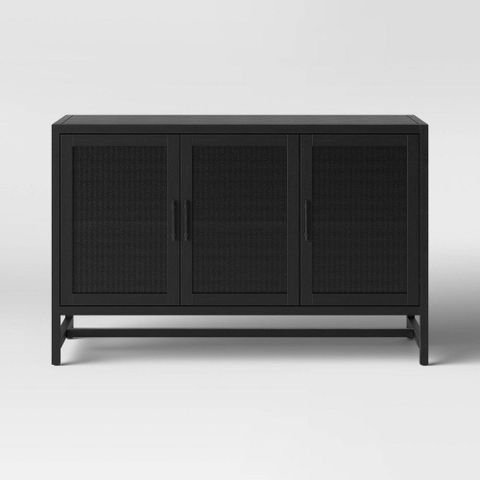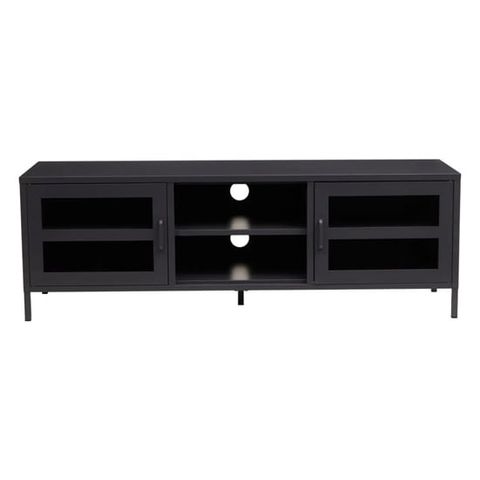Every home deserves a piece that bridges the gap between old and new, tradition and modernity. A transitional console does just that – it brings together different design elements in a way that feels effortless and balanced. But with so many options available, how do you pick the right one? Let’s explore the essential factors that will help you find that perfect piece.
Picture this: you walk into your living room and immediately feel like everything belongs together. The furniture flows naturally, colors complement each other, and there’s that sense of calm sophistication that makes guests feel welcome. That feeling often comes down to one crucial element – a well-chosen transitional console. These versatile pieces serve as both functional storage and striking focal points. They bridge the gap between traditional and contemporary styles, creating that sought-after balance that defines the transitional aesthetic. But what exactly should you look for when selecting yours?
Understanding Transitional Design Principles
Transitional design isn’t just about mixing old and new – it’s about creating harmony through balance. Think of it as the middle ground where classic elements meet modern sensibilities. The key lies in the proportions, materials, and overall visual weight of pieces. A transitional console should never feel like it’s fighting against its surroundings. Instead, it should enhance the existing design language of your space.
Consider how the piece interacts with other furniture. Does it sit comfortably beside your sofa? Will it work with both traditional and contemporary accents? The best transitional consoles have clean lines but retain enough character to feel substantial. They shouldn’t be overly ornate, nor completely minimalist. The secret is finding that sweet spot where everything feels intentional rather than forced.
For example, a console with subtle carved details but simple geometric legs might be perfect for someone wanting to blend classical touches with modern simplicity. It’s all about knowing your space’s personality and choosing accordingly.
Measuring Your Space and Needs
Before even thinking about aesthetics, you must assess your physical requirements. This isn’t just about measuring width – though that’s important. You need to consider the entire footprint, including clearance space around the piece. Will it fit comfortably next to your sofa without blocking sightlines?
Think about what you’ll actually use it for. Do you need it primarily for display? Storage? As a room divider? Each purpose influences your choice significantly. A console meant for displaying artwork requires different considerations than one designed for storing books and accessories.
Here are some key measurements to keep in mind:
• Depth: Most transitional consoles range from 12 to 18 inches deep
• Height: Typically between 24 and 36 inches tall
• Width: Varies greatly, but most work best when they’re proportionally sized to your space
• Clearance: Allow at least 6 inches of space around the piece for easy access
Consider how much you want to store versus display. If you’re a collector of vintage items, you might prefer a console with open shelving. For those who prefer neat organization, drawers and closed compartments might be better choices.
Material Selection and Durability
The material of your console speaks volumes about both its appearance and longevity. Wood remains the most popular choice for transitional pieces because it offers warmth, versatility, and timeless appeal. Solid wood consoles tend to last decades if properly maintained, while engineered woods provide consistent quality at lower costs.
Metal frames add a contemporary edge that pairs beautifully with traditional wood elements. Think of brass or brushed steel accents that bring industrial flair to classic designs. These combinations work particularly well in spaces that aim to blend multiple eras seamlessly.
Glass elements can create an airy feel, especially when used in smaller consoles. However, they require more careful maintenance and may not suit high-traffic areas. Consider how much daily use your space gets before choosing glass components.
When evaluating durability, ask yourself about your lifestyle. Do you have children or pets? Do you entertain frequently? These factors heavily influence which materials will serve you best. A console in a busy family room might benefit from scratch-resistant finishes, while a formal dining area could handle more delicate materials.
For instance, a solid oak console with metal hardware offers both strength and visual interest, making it suitable for various transitional settings.
Style Elements and Visual Balance
A successful transitional console strikes a balance between form and function. It should complement the overall aesthetic of your room without overwhelming it. The styling elements you choose affect how the piece integrates into your space.
Look for pieces that incorporate both traditional and modern elements. This might mean carved details combined with clean lines, or natural wood tones with metallic accents. The contrast should feel intentional, not chaotic.
Consider these style aspects:
• Hardware: Brushed brass, matte black, or antique bronze can change a piece’s character entirely
• Finishes: Matte, satin, or high-gloss finishes each create different moods
• Shapes: Rectangular, curved, or asymmetrical forms all serve different purposes
• Patterns: Subtle textures or grain patterns add visual interest without being distracting
A well-balanced console often features neutral tones that allow other elements in the room to shine. But don’t shy away from bold statement pieces if they align with your personal taste and overall design scheme.
One popular approach combines natural wood with metal accents. The wood provides warmth and organic texture, while the metal adds a touch of modern sophistication. This combination works beautifully in transitional settings.
Functionality and Practical Considerations
Beyond looks, a good transitional console must serve practical needs. Think about storage solutions, accessibility, and how the piece fits into your daily routine. Some people prefer open shelves for easy access to decorative items, while others value the privacy of closed cabinets.
Consider the number and type of storage options you need:
• Open shelving for displaying books, plants, or art
• Drawers for hiding clutter and keeping essentials organized
• Cabinets for storing larger items or sensitive belongings
• Compartments for smaller accessories or electronics
The height and depth of your console should accommodate your specific storage requirements. A console that’s too shallow won’t hold much, while one that’s too deep might be difficult to access. Look for pieces with adjustable shelves or modular components that can adapt as your needs change.
Don’t forget about weight capacity. If you plan to stack items or use the console as a surface for daily activities, ensure it can support the load. Some consoles come with built-in electrical outlets or cable management systems for tech-savvy homeowners.
A console with a built-in charging station might seem like a small detail, but it can make a huge difference in practicality. Think about how you use your space and what features would truly enhance your daily life.
Budget and Quality Assessment
Setting a realistic budget helps narrow down your options while ensuring you get value for your investment. Transitional consoles can range from modest prices to quite expensive, depending on materials, craftsmanship, and brand reputation.
Start by determining how much you’re willing to spend upfront. Then research what quality features you can expect within that price range. Higher-end pieces often offer better construction, premium materials, and longer warranties. However, many mid-range options provide excellent value and lasting beauty.
When evaluating quality, consider these factors:
• Construction methods: Solid wood joints versus glued connections
• Finish quality: Smooth, even coats without streaks or imperfections
• Hardware durability: Stainless steel versus cheap plastic components
• Craftsmanship: Even edges, proper alignment, and attention to detail
It’s worth investing a bit more in quality if you plan to keep the piece for years. A well-made console will age gracefully and maintain its appeal over time. On the other hand, if you’re unsure about your long-term commitment to the space, a more affordable option might be perfectly suitable.
Many retailers offer return policies or warranty protection, which can give peace of mind when making larger purchases. Take advantage of these guarantees when shopping for your console.
Choosing the right transitional console involves more than just picking something that looks nice. It’s about finding a piece that enhances your space’s character while meeting your practical needs. Whether you’re looking for something to display treasured possessions or simply want to create visual balance in your room, the key is understanding how different elements work together.
Take your time with the selection process. Measure carefully, consider your lifestyle, and think about how the piece will fit into your existing design. Remember that a transitional console should feel like it belongs, not like it was added on. When you find the right one, it becomes more than just furniture – it becomes a reflection of your personal style and the thoughtful way you’ve curated your home.
The journey to finding your perfect transitional console might take some research, but the end result is worth every moment invested. Your living space will thank you for making a considered choice that balances beauty with function.














